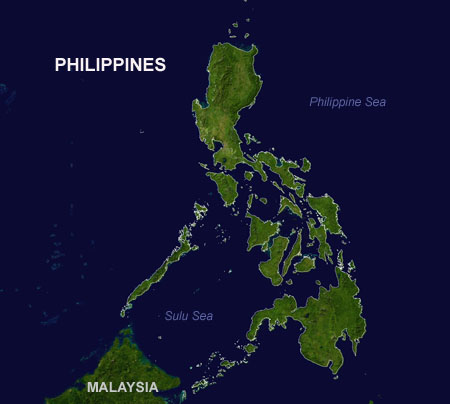|
CAS IN THE PHILIPPINES
Biodiversity research in the Philippines has been a long-standing interest for both terrestrial and marine scientists at the Academy. Comprised of more than 7000 islands scattered over 300,000 km² of the far western Pacific, the Philippines are the world's second largest archipelago, created by a long and complex geologic past. The Philippine Islands are one of the very few places in the world in which both the terrestrial and marine habitats have been labeled as biodiversity hotspots, making this country one the world’s top conservation priorities. Over 65% of the plants and fully 85% of the amphibians exist nowhere else but in the Philippines. CAS marine scientists are discovering new species of invertebrates in coral reefs that are imminently threatened by dynamite and cyanide fishing, while CAS herpetologists are creating a checklist of known Philippine reptiles and amphibians that live in habitats disappearing under the pressures of deforestation and development. This extraordinary diversity under threat is part of what has inspired CAS to recreate a Philippine coral reef in the New Academy’s future Steinhart Aquarium, where CAS will continue its mission to explore, explain, and protect the biodiversity of places like the Philippines.
Learn more about the people and institutions involved and our conservation actions in the Philippines.
|
 |
People and Institutions
Historically, one of the most important collaborations between Philippine and Academy scientists existed between two Research Associates in Herpetology, the late Dr. Walter C. Brown and Dr. Angel Alcala, now Director of the Angelo King Center for Research and Environmental Management at Silliman University in the Philippines. As a result of their 40 year history surveying the archipelago’s unique herpetofauna, the Academy has the largest collection of Philippine amphibian and reptiles in the world – almost 30,000 specimens. These holdings are so important that in 2005, the National Science Foundation awarded a collections improvement grant to organize, archive, and digitize photographs, field notes, and specimen logs from the fieldwork of Drs. Alcala and Brown, to georeference their collection localities and create distribution checklists of species known from each island. This effort will result in an invaluable resource for understanding and conserving Philippine amphibians and reptiles.
In the ocean realm, marine scientists from the Academy’s Dept of Invertebrate Zoology have a long history of discovery and exploration in Philippine waters. Provost Dr. Terry Gosliner has described over a dozen new species of nudibranchs from the Philippines. Coral specialist and curator of Invertebrate Zoology and Geology Dr. Gary Williams focuses his research describing new species of soft corals, sea fans, and sea pens throughout the Indo-Pacific, including the Philippines. Together with Academy Research Associate David Behrens, Drs. Gosliner and Williams have produced one of the most comprehensive guidebooks available for coral reef invertebrates found in the Indo Pacific. This book provides all audiences interested in coral reefs with accurate information on the taxonomy and natural history of one of the world most diverse underwater regions.
Conservation Actions
The description of new species and sorting out their evolutionary relationships are important steps that provide fundamental and strategic knowledge for conservation planning. Equally important is educating and motivating the general public so that coral reef conservation becomes a global priority. This is central to the mission of the future Steinhart Aquarium. When the Academy reopens in 2008, over a million visitors a year will experience a living Philippine coral reef firsthand, right in Golden Gate Park. The 212,000 gallon tank will hold soft and hard corals, sharks, rays, and more than 4,000 colorful reef fishes. All of the animals will either be captive bred or come from sustainable wild sources. While visitors are inspired with the diversity and splendor of an intact Philippine coral reef right before their eyes, additional learning tools and information will convey what each person can do to conserve coral reefs around the world.
Learn more about IndoPacific coral reefs
Read about new species described by CAS research in the Philippines
|

